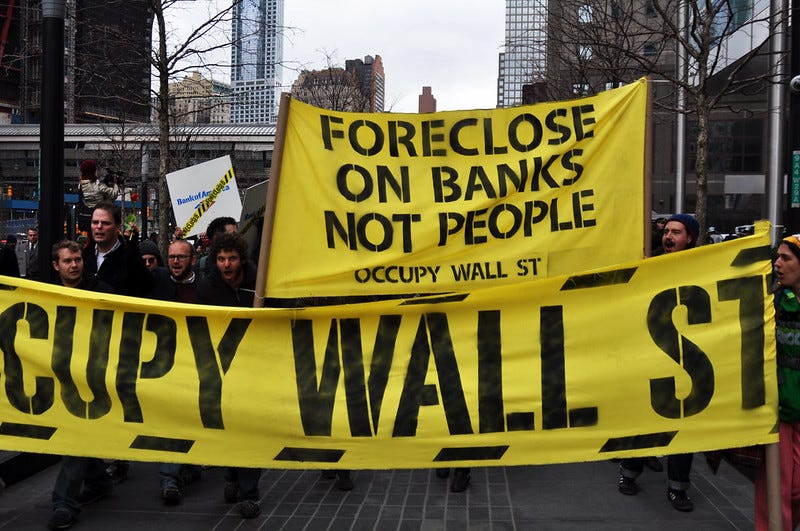Occupation as Rebellion and Repair
Can rebellions lead to reparations? And are occupations a useful tactic to this end?
I arrived in Seattle last Thursday, which happened to be May 25th—the day marking the third anniversary of the murder of George Floyd and the beginning of the global uprisings that followed. I technically still lived in Seattle at the moment the protests here broke out, though it was in a house filled with packed boxes, which along with COVID, further complicated questions of how best to participate. Did I want to get pepper sprayed during a pandemic right before trying to leave town? I wasn’t sure, but I did find ways to send supplies, including a pair of snowboarding goggles I wore as protection from anticipated pepper spray, nearly a decade earlier, the night I was arrested for failure to disperse as the police crushed the Los Angeles encampment of Occupy.
The protests after George Floyd are often characterized as rebellions. While they helped popularize calls for abolitionism and forms of restorative justice—ideas that have restoration, repair, and healing at their center—it hasn’t seemed, at least not to me, that these two concepts are paired together very often. We don’t talk about rebellion as related to repair. Did efforts for reparations get a boost, post-rebellion? Yes. Do we yet talk easily about rebellion as a call for repair or for reparations? Not so much. I’m curious about this, and if there is a greater connection between acts of rebellion, which act as a kind of rupture, and the opening up of possibilities for true repair. This flies in the face of how rebellion and protest are often read; popular narratives often see them as nonsensical, attention-seeking enactments of additional harm. My own experience tells me they’re much more than that.
While protests happened worldwide after Floyd’s death, it was here in Seattle that a very particular kind, the Capitol Hill Organized Protest (or CHOP, and at times also known as either the Capitol Hill Occupied Protest or the Capitol Hill Autonomous Zone) took place, with calls to defund police—calls that took on a new urgency for many experiencing the impacts of police violence for the first time, as tear gas seeped into local residences. The latter fact is probably why the CHOP holds a more prominent place in popular memory than some other important Seattle occupations—both the Daybreak Star Indian Cultural Center and El Centro de la Raza are longstanding community hubs that were won using the tactic of occupation. These are direct actions that didn’t simply flash and fizzle, but very clearly won actual physical territory, and they’re worth learning more about. Though it’s possible that the effects of the CHOP are still playing out in ways that aren’t so easy to see, as most of us who were involved in Occupy are likely to argue is true for that movement.

But all these examples raise another set of questions: why is occupation so often the tactic of rebellion these days? What is gained by it? And when is it likely to be actually effective, and when is it more likely to fail? Do occupations—which are inherently place-based, necessitating the physical maintenance of a specific location—offer us any better opportunity for place-based healing? Do they increase or lessen the possibility for rebellion to turn to repair?
Unsettling is going to work this theme a bit between now and July 4th—a day that strangely celebrates rebellion while providing the ideological foundation to shut down any modern instances of it. (We’re aiming to mark the 4th with something more than our usual cranky posts objecting to the holiday.) I’m hoping it opens up some space to talk more about the topic of reparations (a theme we’ve let lie dormant a little too long here in this newsletter). But I think we might also find, unexpectedly, that these ideas of rebellion, repair, and occupation fit in naturally with what we’ve been discussing in the first half of this year, in which we’ve probed ideas about the right for people to take up space and to build for themselves the most basic forms of shelter, along with building the social structures of the world that support their survival. For occupation is the form of rebellion most easily available to those without a home; indeed, some have no choice but to make their nightly sleep out in the rough its own miniature form of protest. There is a logic, too, to the use of occupation as the first step in any fight aiming to repair the injustice of land theft.
So join me this next month or so for some first-hand accounts of occupations, as well as some learning about past and present movements, from these Seattle examples to a whole array of international stories.
Thanks for reading, and more soon,
Meg



